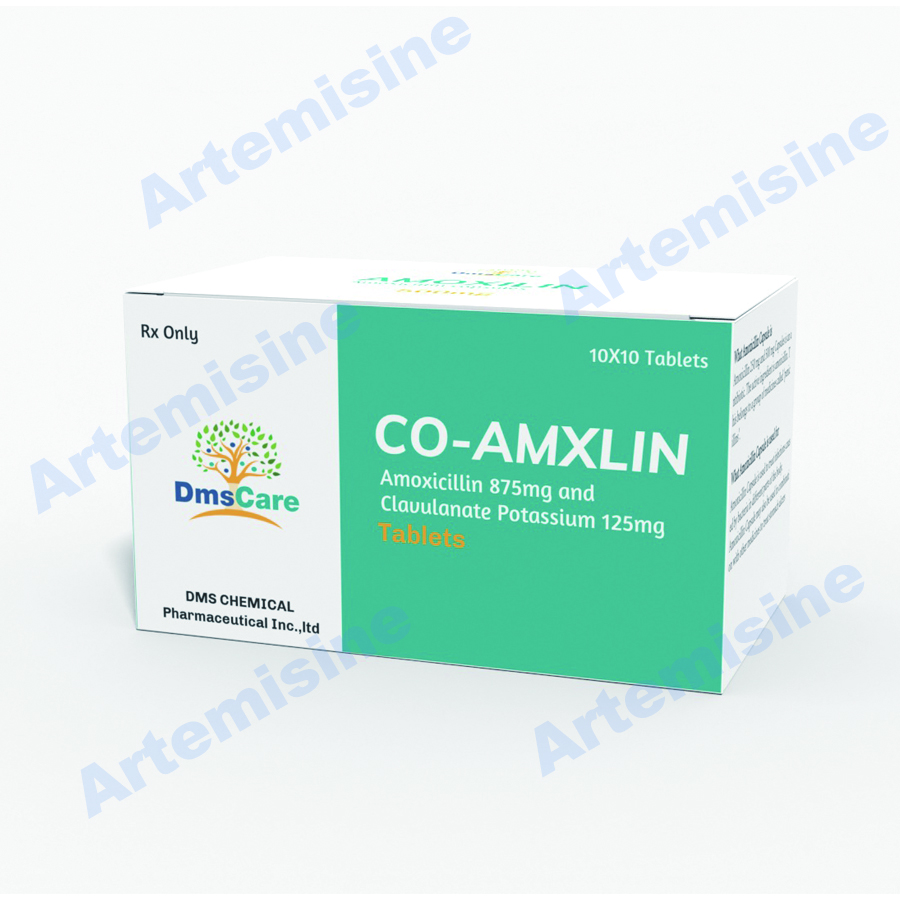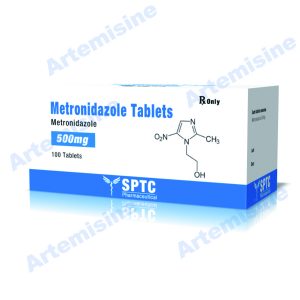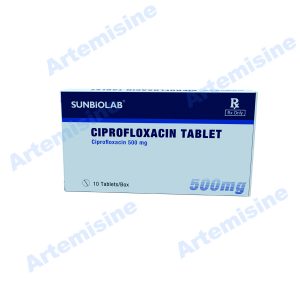Product Description
Products name:
Amoxicillin and Clavulanate Tablets
Contains:
Amoxicillin and Clavulanate Potassium 875mg/125mg
Package:
10 tablets/ blister*10/ box;
Indications and Usage for Amoxicillin and Clavulanate Tablets
Amoxicillin and clavulanate potassium tablet is a combination of amoxicillin, a penicillin-class antibacterial and clavulanate potassium, a beta-lactamase inhibitor indicated for treatment of the following infections in adults and pediatric patients:
- Lower respiratory tract infections
- Acute bacterial otitis media
- Sinusitis
- Skin and skin structure infections
- Urinary tract infections
Limitations of Use
When susceptibility test results show susceptibility to amoxicillin, indicating no beta-lactamase production, amoxicillin and clavulanate potassium should not be used.
Usage
To reduce the development of drug-resistant bacteria and maintain the effectiveness of amoxicillin and clavulanate potassium and other antibacterial drugs, amoxicillin and clavulanate potassium should be used only to treat or prevent infections that are proven or strongly suspected to be caused by bacteria.
Amoxicillin and Clavulanate Tablets Dosage and Administration
- Adults and Pediatric Patients greater than 40 kg: 500 or 875 mg every 12 hours or 250 or 500 mg every 8 hours, based on amoxicillin component.
- Pediatric patients aged 12 weeks (3 months) and older: 25 to 45 mg/kg/day every 12 hours or 20 to 40 mg/kg/day every 8 hours, up to the adult dose.
- Neonates and infants less than 12 weeks of age: 30 mg/kg/day divided every 12 hours, based on the amoxicillin component. Use of the 125 mg/5 mL oral suspension is recommended.
Dosage Forms and Strengths
- Tablets: 875 mg/125 mg tablets are scored
Contraindications
- History of a serious hypersensitivity reaction (e.g., anaphylaxis or Stevens-Johnson syndrome) to amoxicillin and clavulanate potassium or to other beta-lactams (e.g., penicillins or cephalosporins).
- History of cholestatic jaundice/hepatic dysfunction associated with amoxicillin and clavulanate potassium.
Warnings and Precautions
- Serious (including fatal) hypersensitivity reactions: Discontinue amoxicillin and clavulanate potassium if a reaction occurs.
- Severe Cutaneous Adverse Reactions (SCAR): Monitor closely. Discontinue if rash progresses.
- Hepatic dysfunction and cholestatic jaundice: Discontinue if signs/symptoms of hepatitis occur. Monitor liver function tests in patients with hepatic impairment.
- Clostridioides difficile-associated diarrhea (CDAD): Evaluate patients if diarrhea occurs.
- Patients with mononucleosis who receive amoxicillin and clavulanate potassium develop skin rash. Avoid amoxicillin and clavulanate potassium use in these patients.
- Overgrowth: The possibility of superinfections with fungal or bacterial pathogens should be considered during therapy.
Adverse Reactions/Side Effects
The most frequently reported adverse reactions were diarrhea/loose stools (9%), nausea (3%), skin rashes and urticaria (3%), vomiting (1%) and vaginitis (1%).
Drug Interactions
- Co-administration with probenecid is not recommended.
- Concomitant use of amoxicillin and clavulanate potassium and oral anticoagulants may increase the prolongation of prothrombin time.
- Co-administration with allopurinol increases the risk of rash.
- Amoxicillin and clavulanate potassium may reduce efficacy of oral contraceptives.
Use In Specific Populations
- Pediatric Use: Modify dose in patients 12 weeks or younger.
- Renal Impairment: Dosage adjustment is recommended for severe renal impairment (GFR less than 30mL/min).




